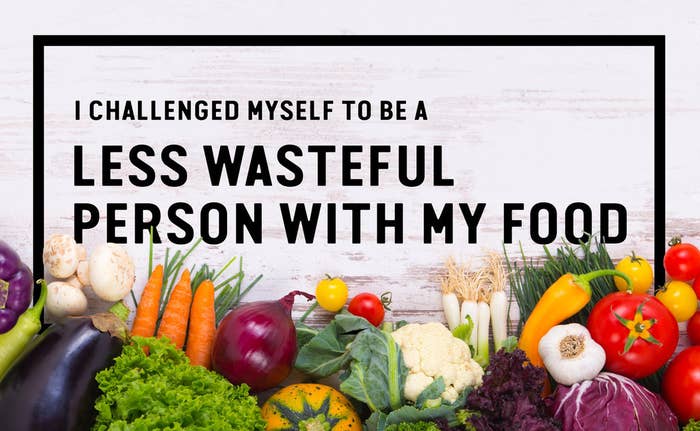
Hi! I’m Ashley, and I generally try to be a good person.
What does being a good person entail for me? Well, I say "please" and "thank you," I let elderly people take my seat on the subway, and I don't respond with "k" to lengthy text messages.
I'm also a vegetarian because I love animals! I try to be as environmentally conscious as possible by recycling, turning off the lights when I leave rooms, and taking public transportation. Pretty good, right? So I thought…

Full disclosure: I’m guilty of wasting food.
When I grocery shop, I tend to buy things impulsively, which often leads to food going uneaten in the back of my fridge. I'm also terrible at guessing proportions and overestimate how much I need to take. My biggest flaw is I underestimate how lazy I can be! Most of the time, I think to myself, I'm going to cook every evening this week! Haha, yeah right. There are at least three days of the week I get takeout or microwavable frozen burritos for dinner. Who am I kidding? I also asked some co-workers how often they think they throw out food. The consensus? A lot of us, unfortunately, throw out leftovers with little to no regard of the consequences.
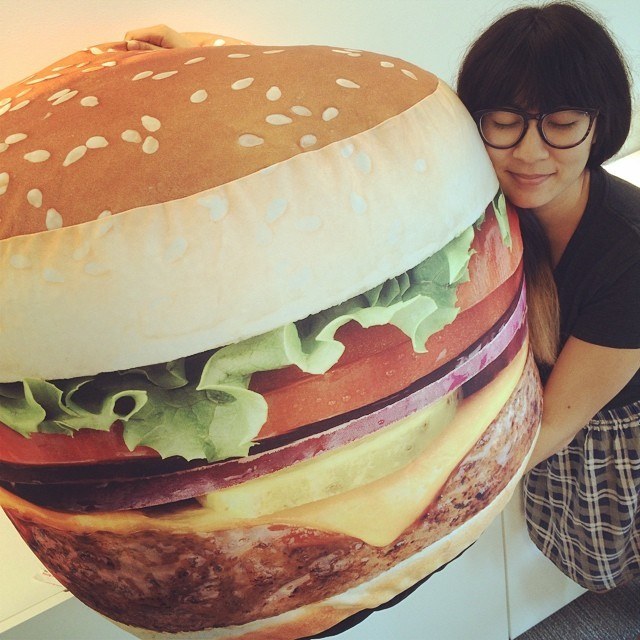
Well, as it turns out, wasting food is terrible for the environment. According to the Waste Free Kitchen Handbook by Dana Gunders, a scientist with the Natural Resources Defense Council (NRDC), throwing away one egg wastes 55 gallons of water!
Surprising statistic, right? But that's just the tip of the iceberg. Here are some other shocking facts I learned from the book:
* "40% of all food in America goes uneaten."
* In the U.S., an average family of four wastes about $120 a month by throwing away food.
* In the U.S., it's estimated that all the uneaten food we generate is equal to the greenhouse gas emissions from 33 MILLION passenger cars!
I never thought about wasting food in conjunction with wasting environmental resources. I need to do better!
So because I love a good challenge, I spent an entire week trying not to waste any food that I bought and used tips and tricks from the Waste Free Kitchen Handbook to do it. Hopefully you can use them too!
1. Plan ahead by prepping meals each week and writing down a grocery list...because you can't waste what you don't buy.
2. Clean and organize your fridge because if you can't see your food, it will definitely go uneaten.
3. Try to use every single part of your food. Broccoli stalks are delicious and shouldn't be wasted.
4. Learn the correct way to store food so it lasts longer!
5. Eat your leftovers! And that doesn't have to mean reheating old pasta. There are creative ways to spice up your old food.
And here's how I used all of these tricks…

I actually love grocery shopping, but I always make the mistake of doing it when I’m hungry.
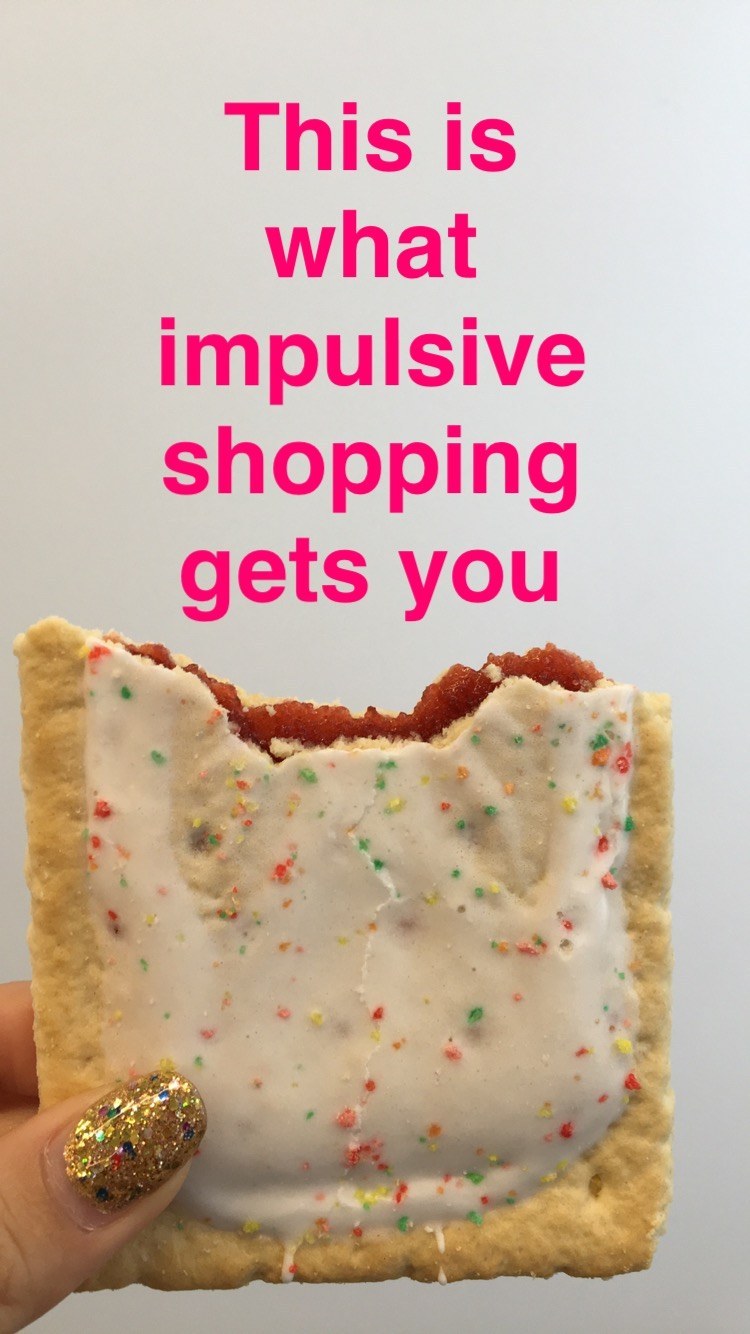
First, I did a quick scan of what I had in my pantry and fridge.

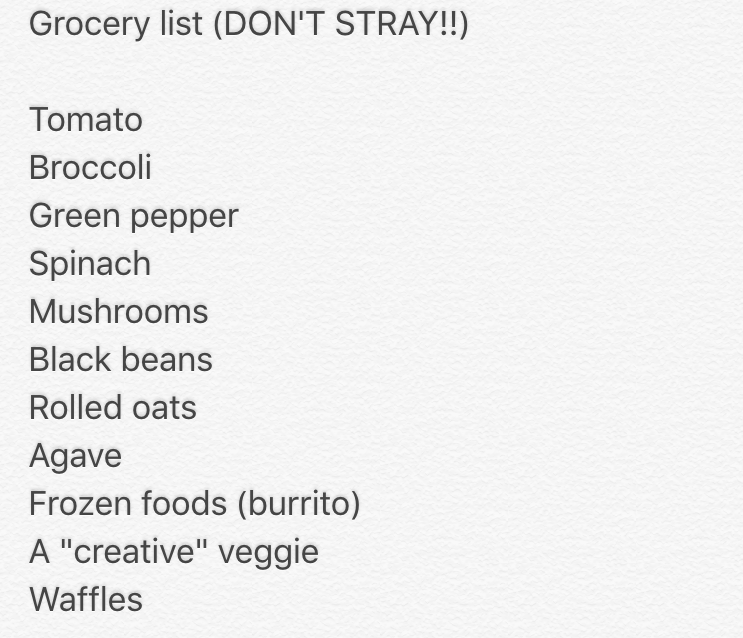
I even bought an imperfect tomato!
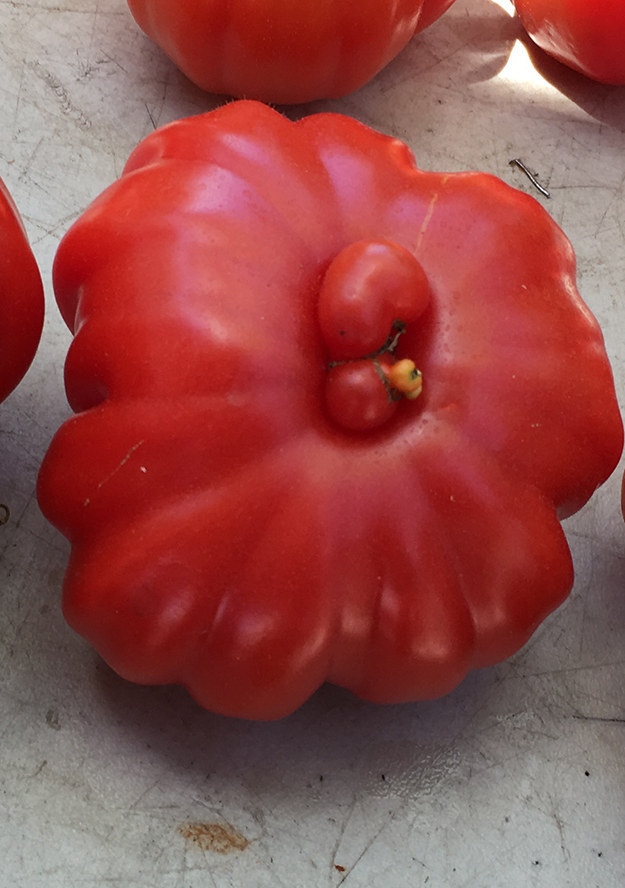

Here’s a picture of my fridge:
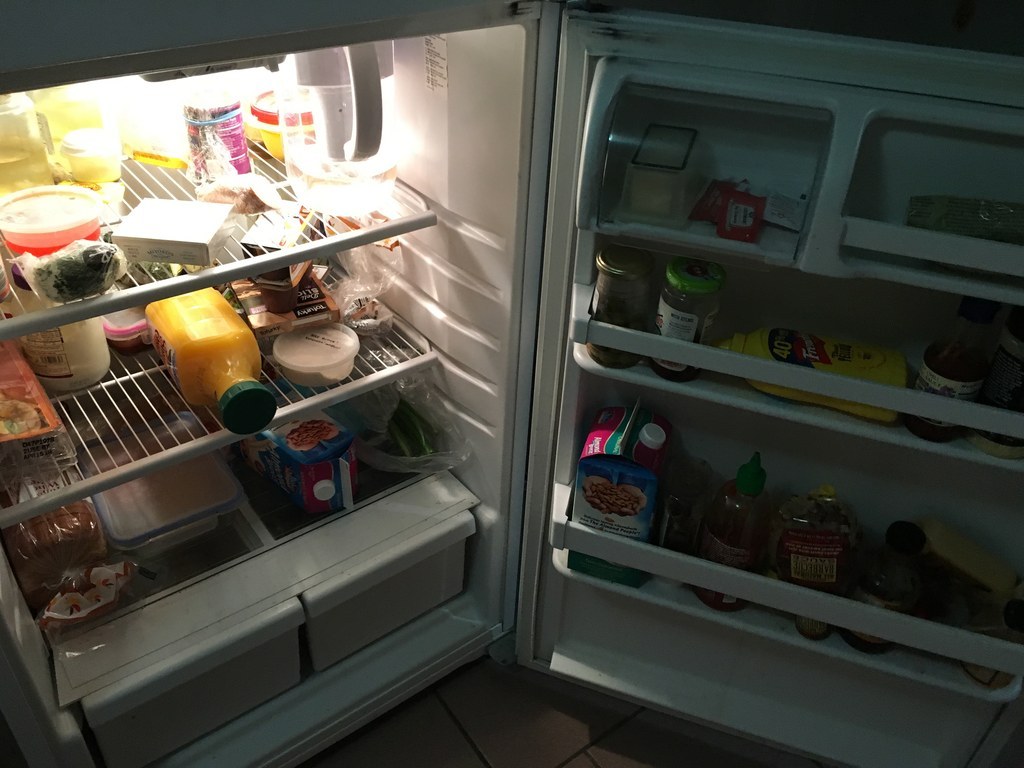
Because I’m a ~visual~ person who likes charts and diagrams, I used this handy chart from the handbook to help guide me through my spiritual awakening (aka a legitimately organized fridge).
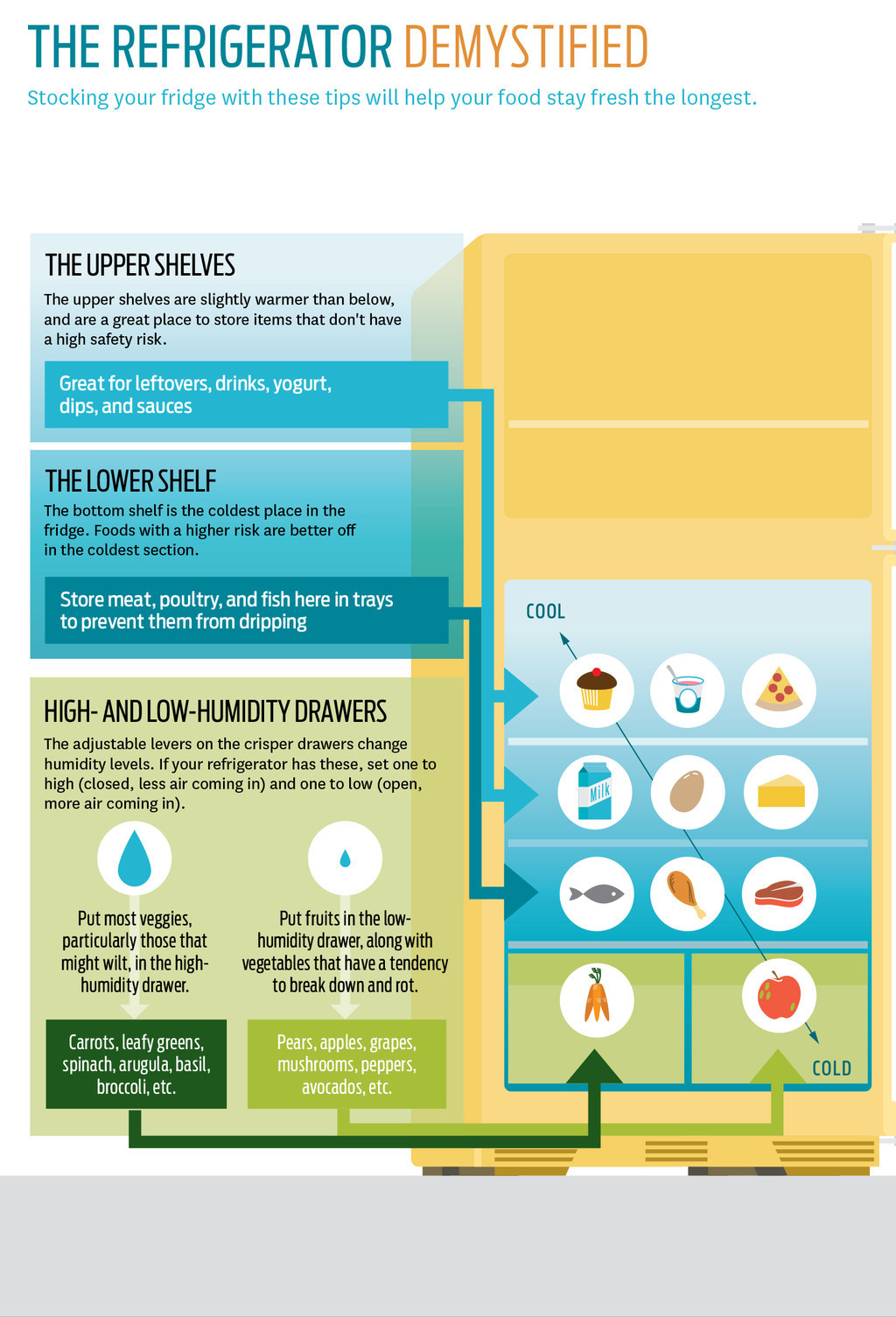
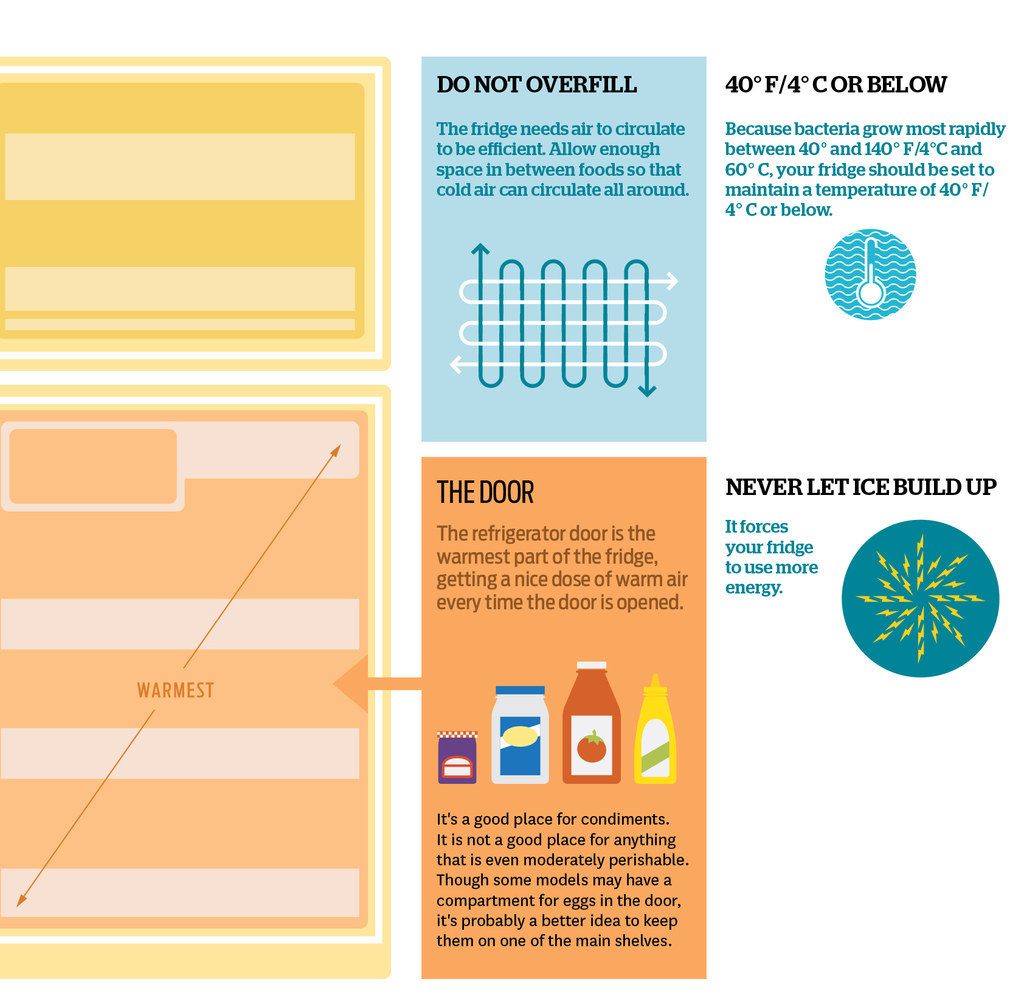
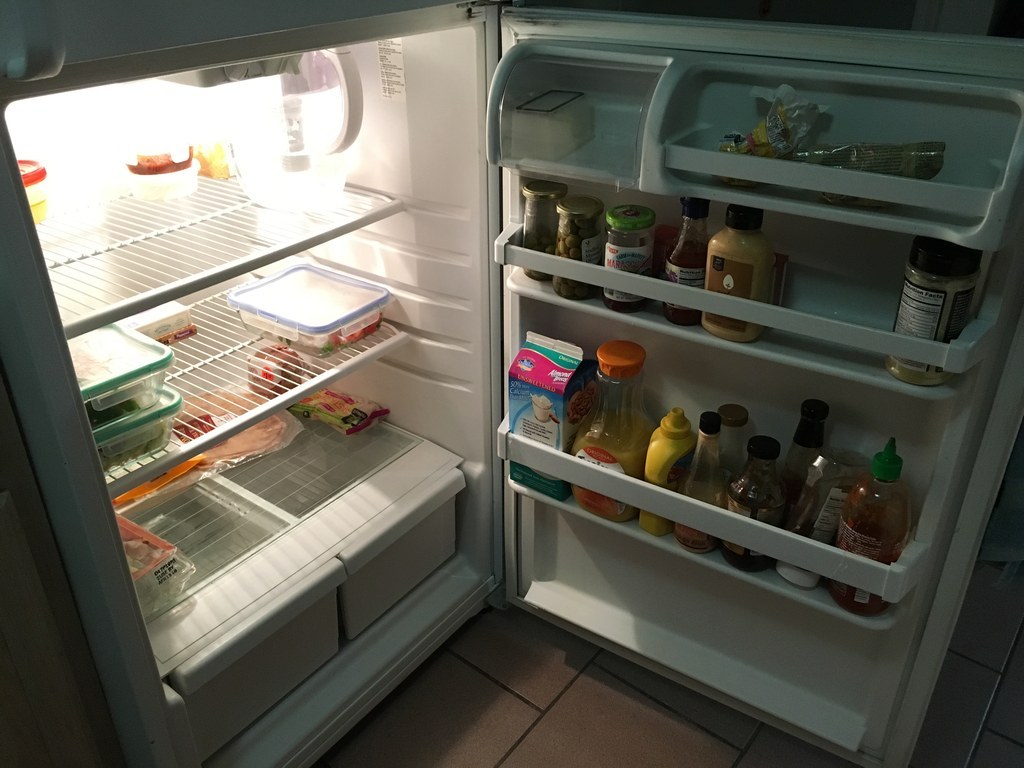

Everybody knows that the “tree part” of the broccoli is the most delicious.
There's no debate here. Yes, I'm talking about the florets. But the stalk is like a thick tree-trunk monster that's much too difficult to chew. I usually never think twice about throwing away the stalks (or drawing on them), but I surely wasn't going to waste them this week. I had to find a way to make them delicious.
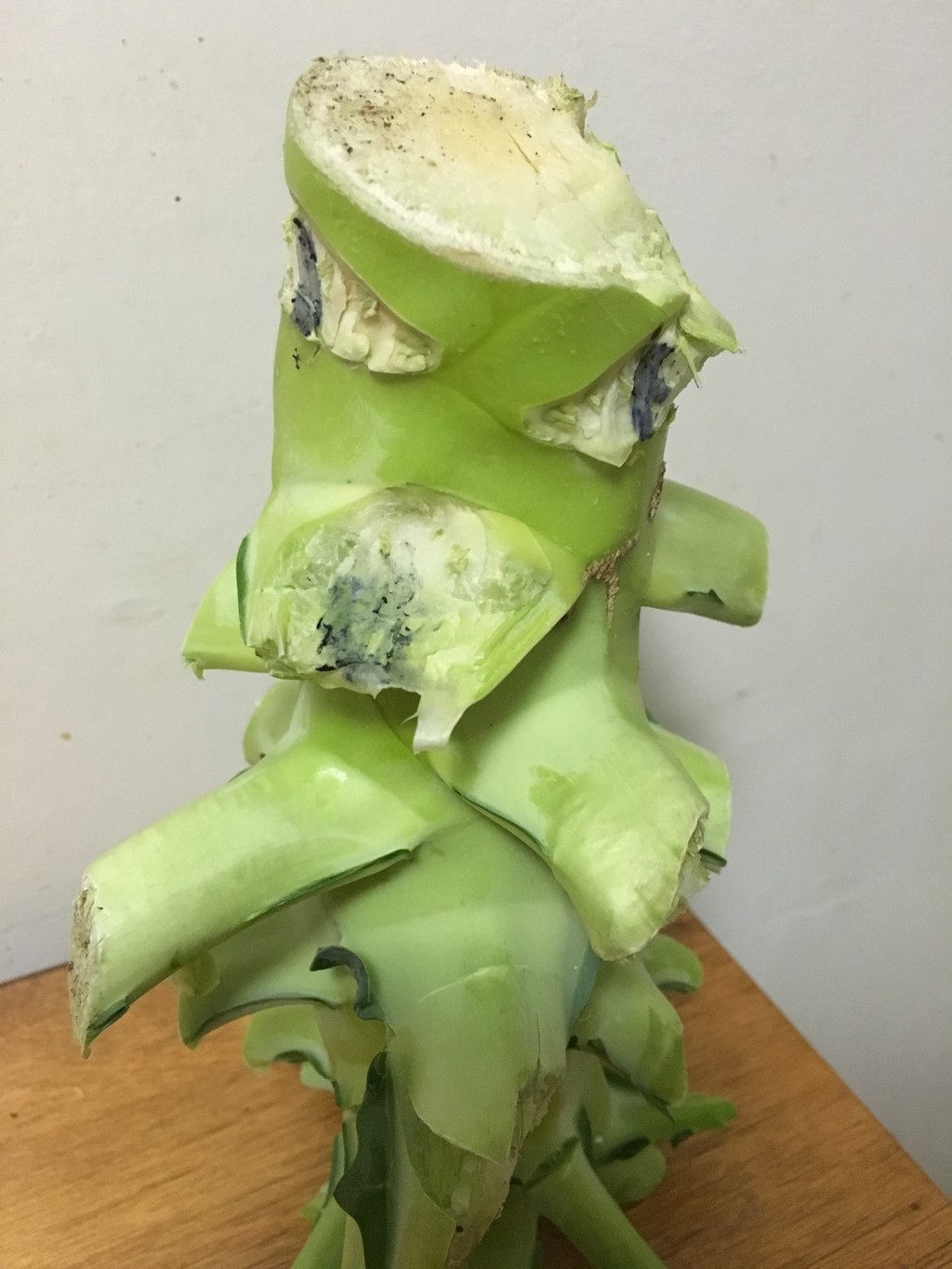
Luckily, the handbook had a recipe just for my predicament! I tried my hand at making a "broccoli stalk salad." Since I already had a meal plan for my dinners throughout the week, I decided to eat the salad for lunch at work. That meant planning…the night before! What kind of person was I turning into? I felt like I was adulting so hard that I deserved an adult merit badge.
As it turns out, though, I’m not that great at following directions.
All I had to do was slice up the stalks with a vegetable peeler, but I didn't have one, so I grated the stalks instead. In place of skinny stalk sticks, I had broccoli coins. Whoops!
The recipe also called for carrots (which I cut into coins instead of shaving), red onion, avocado, and cilantro. And with that combination, the salad actually tasted good! Who knew broccoli stalks could be so versatile?


There are many reasons why I throw out food.
Sometimes I make a horrible experimental dish, and I toss it. (Ugh, yes, it pains me to write that.) Other times, I see something "looks old" in my fridge, and I get rid of it. But having things that "look old" and having things that can actually make you sick if consumed are two very different things.
I learned throughout this whole experience that expiration dates on packaged food are typically NOT regulated.
All kinds of companies have different dates that indicate their "peak quality" or their "peak freshness." The dates they provide are just suggestions for when you should eat the food. Most of the time, food is absolutely fine after the "best by" date, especially if it's something dry like pasta. If you're curious about other facts on food labeling, I suggest visiting this page on SaveTheFood.com.
After I schooled myself on food labels, I actually had to figure out how to store the opened food in my fridge.
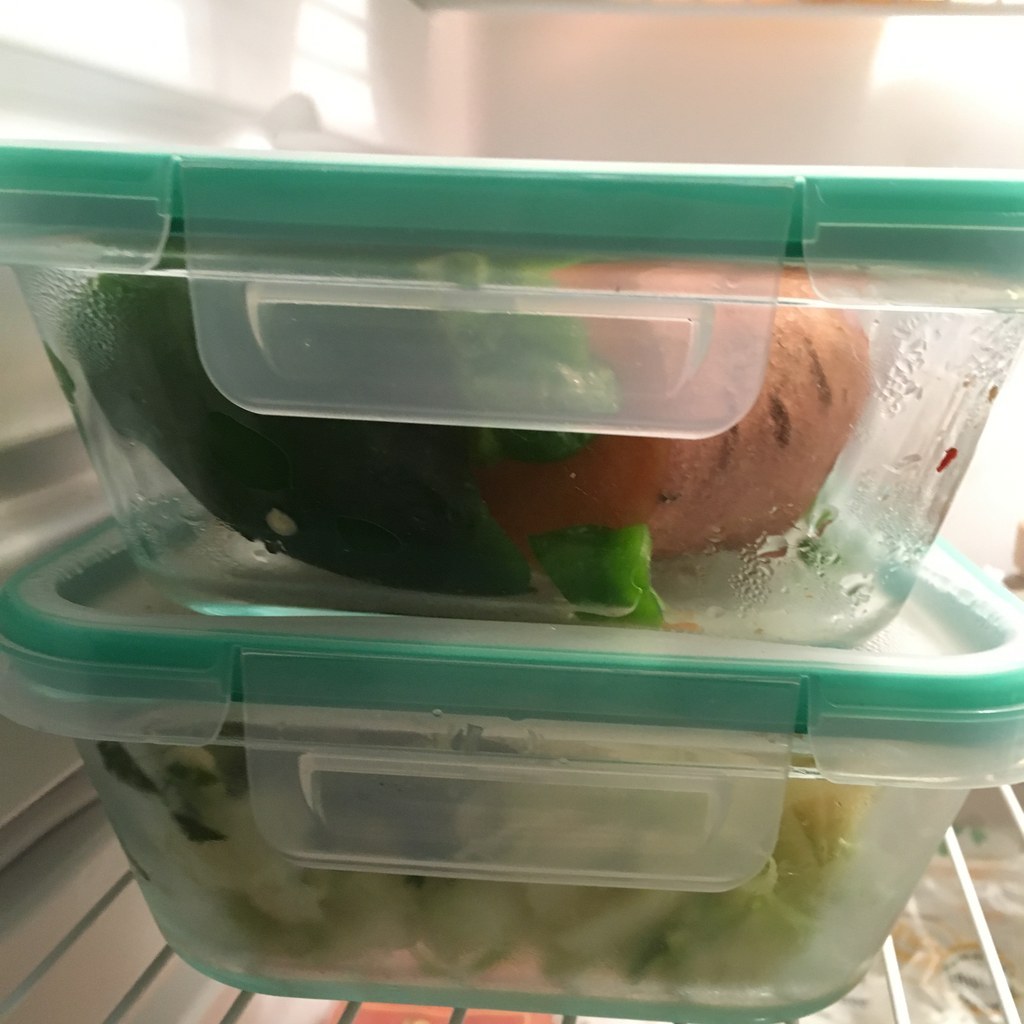
Not only am I storing my food better for this challenge, I’m also trying something new! I have old green onion “butts,” and I’m going to try to regrow them instead of throwing them away.
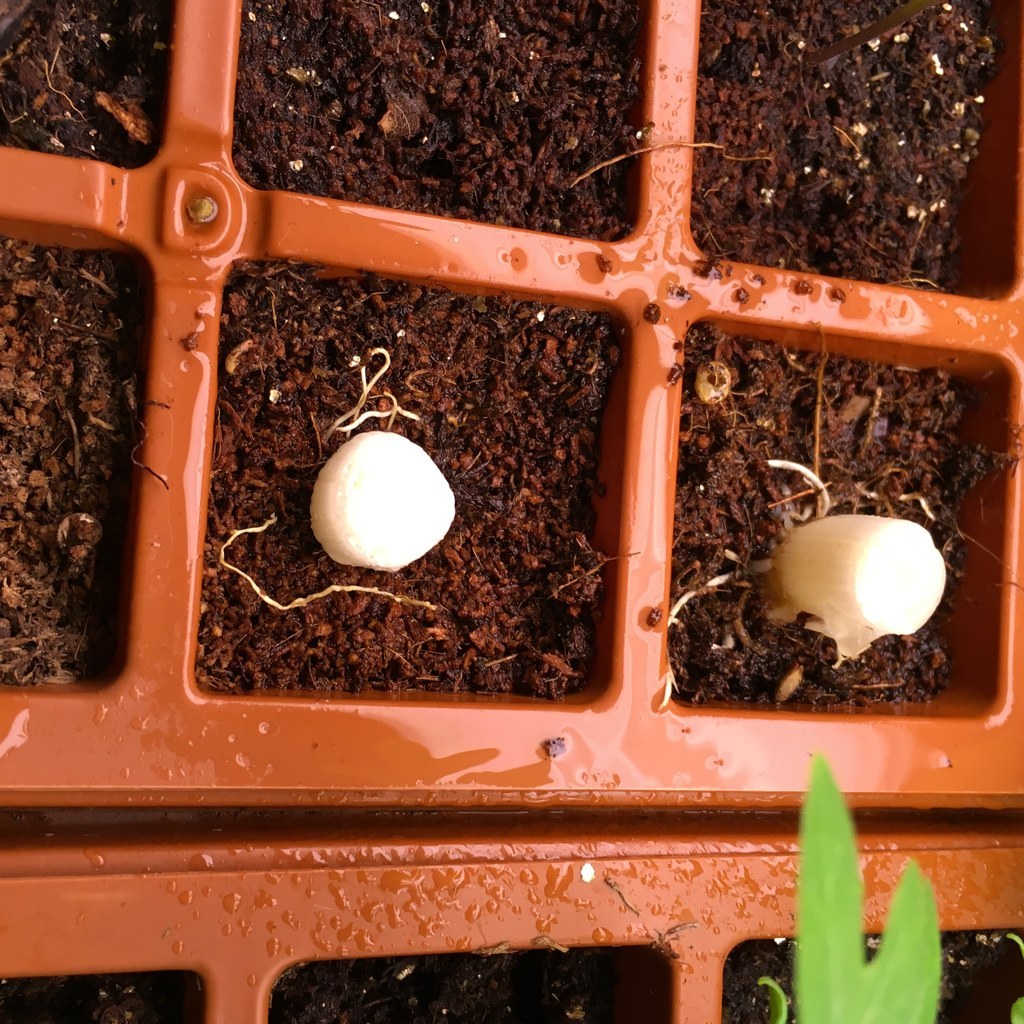

This week, I had plenty of leftovers I ate “as is,” which means I didn’t do anything special to them.
Sometimes I didn't even warm them up in the microwave. (Yes, I'm that lazy.) That's all fine and dandy, but is that appealing? Four out of five bananas say no.
I also have to admit that even though I was trying really hard not to throw away any food this week, I failed a couple times. One day for lunch, I ate half a glorious burrito…and then two hours later realized it gave me a terrible stomachache. I threw away the second half with much regret. Part of it was that I knew I was cheating in my challenge. The other part was because that burrito was $9.
After my regularly scheduled taco night, I had some leftover black beans that needed to be eaten. I had two options: I could throw some salt on them and eat them straight out of the can, OR I could do some experimenting and make something new.
Enter: sneaky black bean brownies!


Wipe that incredulous look off your face right now because black bean brownies are ACTUALLY GOOD! The right amount of chocolate and agave can make the most unlikely of things taste delicious, and boy do they turn black beans into yummy, fudgy pieces of cake.
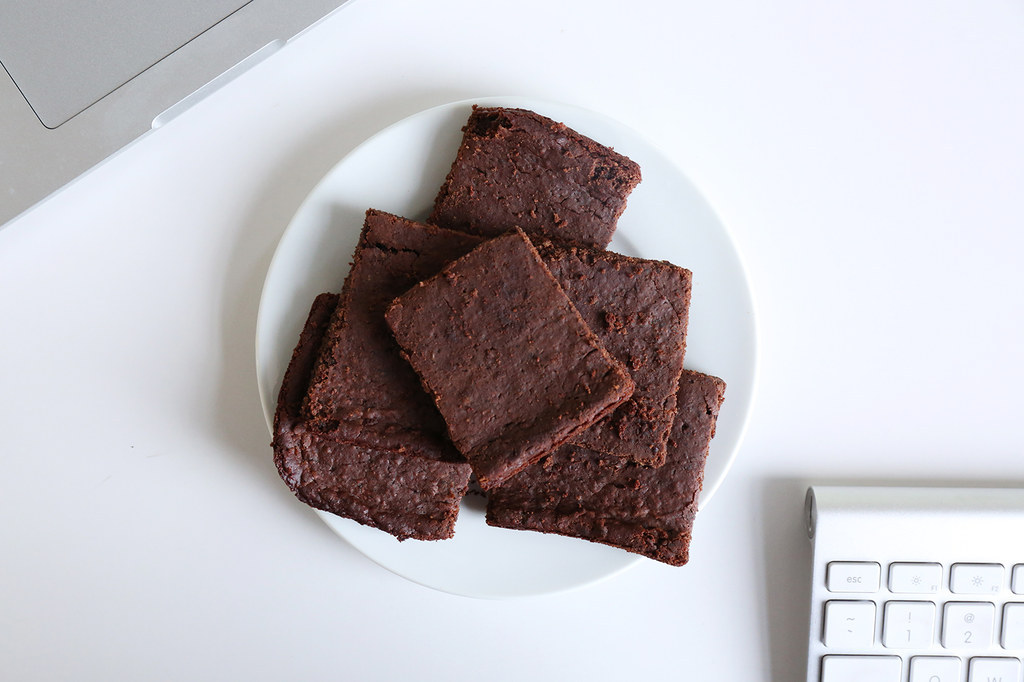

I finished all my challenges! And you know what? Wasting less food is NOT hard.
You just have to be 20% less lazy than you were before and learn to be a little creative with leftovers. It's actually really fun to think of unique ways to eat something again. Throughout this challenge, I kind of felt like a contestant on a cooking show pulling out ingredients from my mystery basket. By the end of the week, I felt like the winner of the $10,000 grand prize! Well, OK, maybe I didn't save that much money, but you really do save a lot by shopping in your fridge before looking elsewhere.
I also think that half the battle of not wasting any food is to be cognizant of the consequences of waste.
If you think to yourself that wasting one hamburger is the equivalent of wasting 450 gallons of water, you're way less likely to throw away that meal. From now on, I'll do my best to try to help educate people on some of the unthought-of consequences in careless food disposal.
But I also realize I’m not perfect.


And no one is. There will be days when I HAVE to throw something out because it's rotten and smelly, but the trick is to try not to get to that place. With all these tips and tricks in my toolkit, I think I'm ready to become a food waste warrior! Come at me, food — I'm going to do what I do best: eat!
40% of all food in America goes uneaten, but you can help change that!
The Ad Council and the Natural Resources Defense Council have launched "Save the Food," a national campaign to combat food waste from its largest source: consumers, who collectively waste more food than grocery stores, restaurants, or farms. Visit SaveTheFood.com to learn more about how you can save food, the environment, and money!
Waste Free Kitchen Handbook by Dana Gunders, 2015. Used with permission from Chronicle Books, San Francisco. Please visit here.

